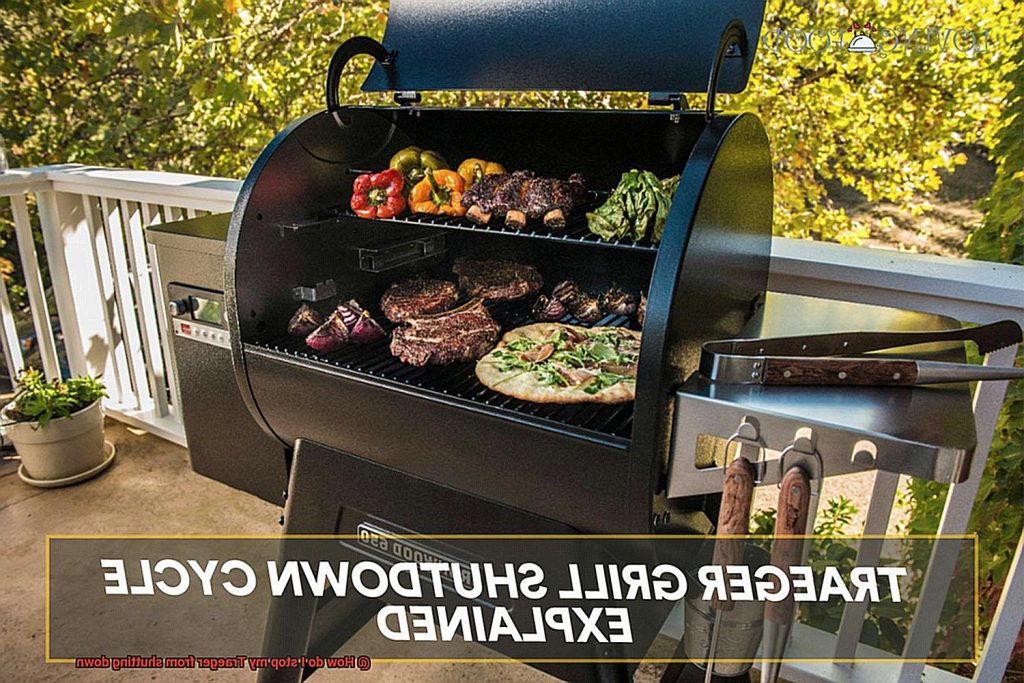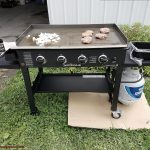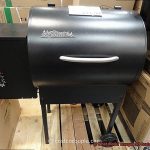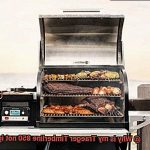As a backyard chef, I live for the perfect smoke and grill. And when it comes to grills, my Traeger is the king of the castle. With its consistency, convenience, and versatility, it’s no wonder why this high-quality pellet grill has earned its reputation.
But picture this: You’re all set to cook up a storm for your family and friends when your Traeger decides to shut down unexpectedly. Talk about a buzzkill. As someone who’s been there before, let me tell you that it’s not a pleasant experience.
The truth is that shutdowns are a common issue among Traeger owners. From malfunctioning thermometers to dirty grills, there are many reasons why your grill might turn off without warning. But don’t fret; there are several steps you can take to prevent this from happening.
In this blog post, I’m going to share some practical tips and tricks that will help keep your Traeger running smoothly and efficiently. Whether you’re an experienced pro or just starting out with your new grill, these tips will help you avoid those frustrating shutdowns and keep your food sizzling perfectly. So sit tight and get ready to learn how to make the most of your Traeger.
Contents
What Causes a Traeger to Shut Down?
Traeger grills are a popular choice for outdoor cooking because of their reliability and ease of use. However, even the most dependable grills can shut down unexpectedly, leaving you with half-cooked food and a ruined meal. In this article, we explore the common reasons why a Traeger may shut down and what steps you can take to prevent it.
One of the most common causes of a Traeger shutdown is an empty pellet hopper. The hopper is responsible for storing the pellets that fuel the grill, and when it runs low, the grill will automatically shut down to prevent damage to the heating element. This safety feature protects your grill from overheating and causing a fire. To avoid this issue, ensure that you always have enough pellets in the hopper before starting your grill.
Another reason why a Traeger grill may shut down is due to a clogged auger. The auger is responsible for feeding the pellets into the firepot, and if it becomes clogged with debris or pellets, it can cause the grill to shut down. Regular maintenance and cleaning of the auger can help prevent this issue.
A faulty temperature sensor or power supply can also cause a Traeger grill to shut down unexpectedly. The temperature sensor monitors the internal temperature of the grill and sends signals to the controller to maintain a consistent heat level. If the sensor is not functioning correctly, it can cause the grill to shut down as a safety measure. Similarly, if the power supply is not providing enough power to the grill, it may shut down or fail to heat up properly.
User error can also cause a Traeger grill to shut down. For instance, leaving the lid open for too long can cause the temperature inside the grill to drop and trigger an automatic shut down. Similarly, if you place your grill in an area with poor ventilation or airflow, it may overheat and shut down. Ensure that you close your Traeger’s lid when cooking and place it in a well-ventilated area.
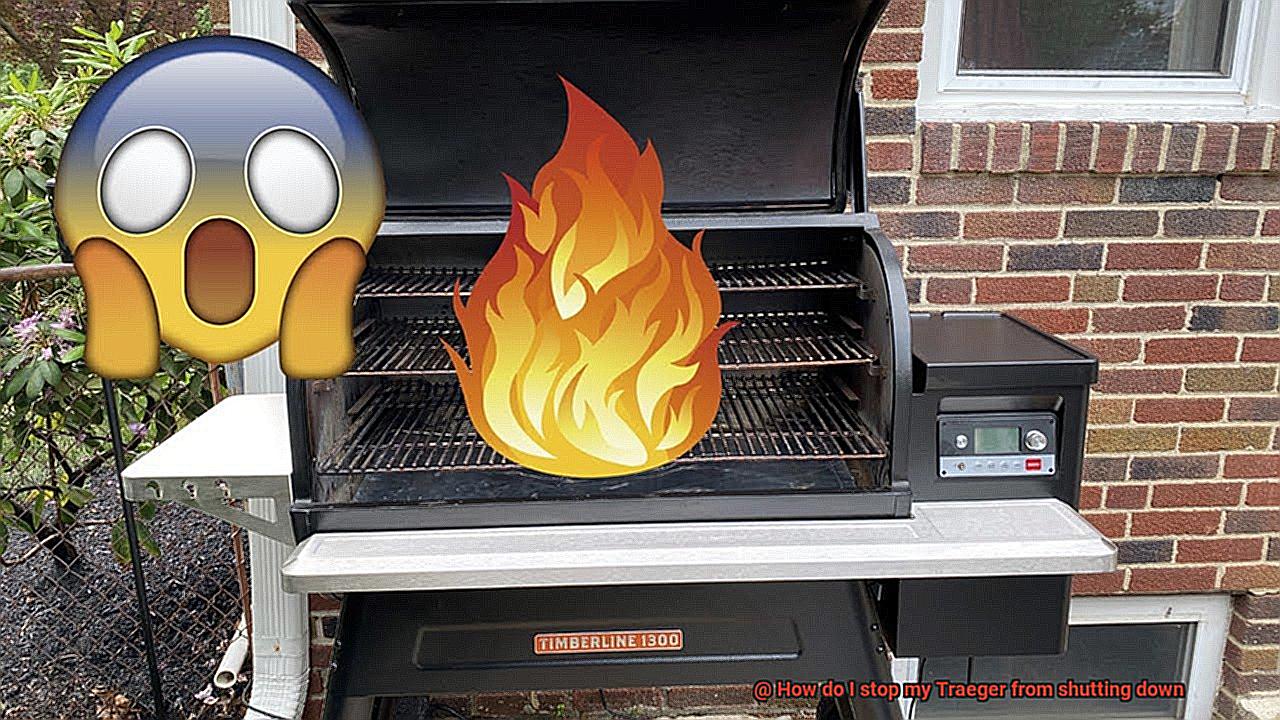
Finally, grease and debris can accumulate in the firepot over time, causing the grill to shut down. A deep clean is therefore necessary to keep your Traeger running smoothly. Turn off the grill and let it cool before removing the grates and drip tray. Use a scraper or wire brush to remove any debris from the firepot and vacuum out any remaining ash or debris with a shop vac.
Ensuring Adequate Pellet Levels
Pellets are the fuel source for your grill, and without them, your grill won’t be able to maintain a consistent temperature or cook your food to perfection.
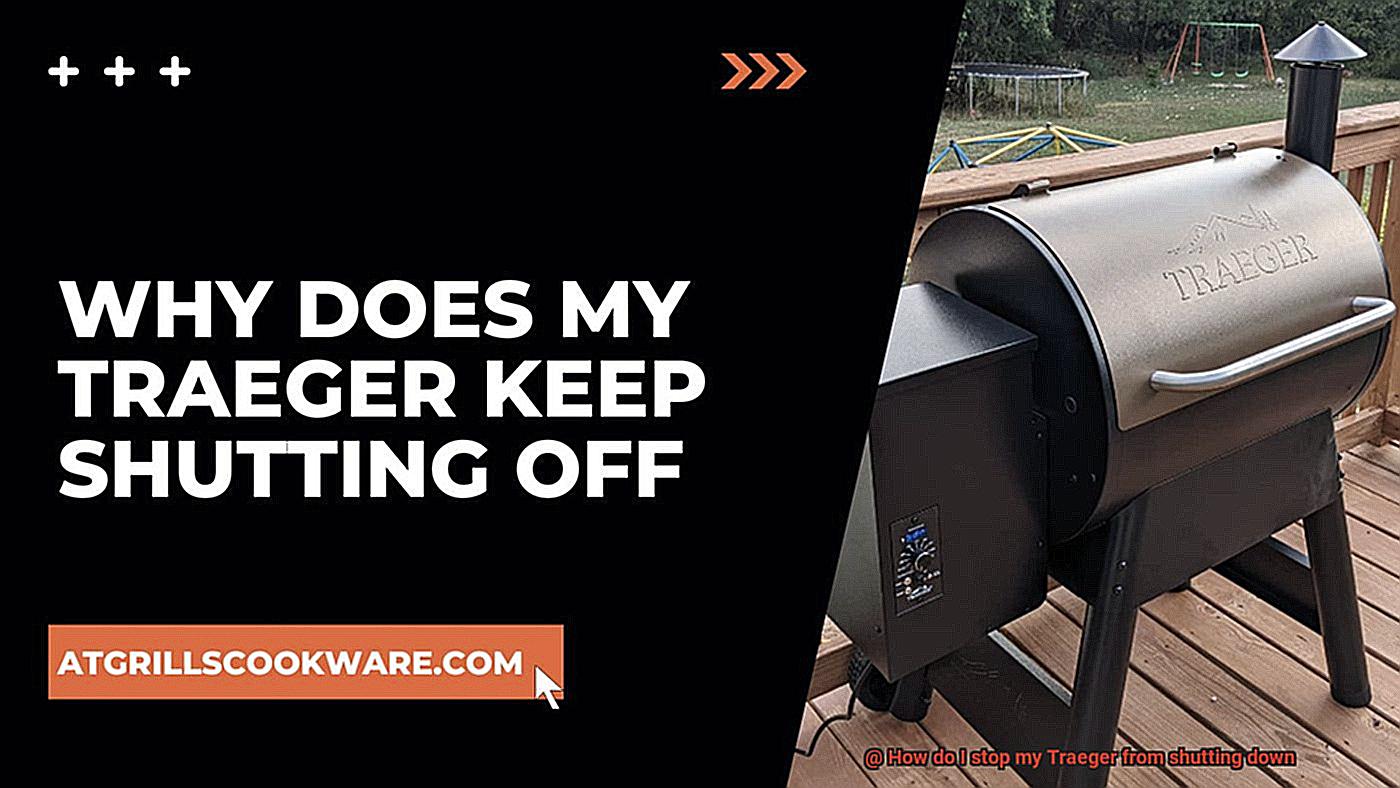
To begin with, it’s crucial to check the pellet levels before starting your grill. Look into the hopper where the pellets are stored, and make sure they cover the bottom of the hopper. It’s recommended to keep the hopper at least half full, especially during long cook times. This simple step will ensure that you have enough pellets to last you through your entire cookout.
But don’t stop there. Keep monitoring the pellet levels throughout your cooking process. Traeger grills have a digital controller that displays the current temperature and pellet levels. This display is your friend. Keep an eye on it and add more pellets as needed. This will help you avoid any unexpected shutdowns mid-cook.
In addition to monitoring pellet levels, it’s essential to use high-quality pellets. Cheap or low-quality pellets can leave behind excessive ash and debris that can clog up your grill and cause it to shut down unexpectedly. Stick with high-quality hardwood pellets specifically designed for use in Traeger grills. These pellets burn cleaner and produce less ash than low-quality alternatives.
To summarise, here’s a quick checklist for ensuring adequate pellet levels:
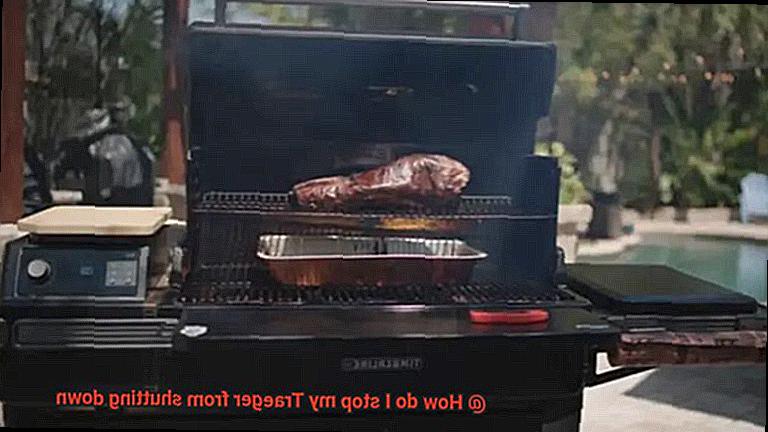
- Check pellet levels before starting your grill
- Keep the hopper at least half full
- Monitor pellet levels throughout cooking process
- Use high-quality hardwood pellets
Checking the Temperature Probe
Fear not my friends, because today we’re going to dive into the crucial task of checking your temperature probe, the key component responsible for measuring the internal temperature of your grill and sending information to the controller.
For starters, always make sure you turn off your grill and unplug it before checking the temperature probe. Once that’s done, locate the temperature probe on the inside of the grill, typically near the hopper. Check the wires and connections for any signs of damage or wear and tear. If you notice any damage, it’s time to replace your temperature probe.
But don’t stop there. To ensure proper functionality, use a multimeter to test your temperature probe’s resistance. Insert one end of the multimeter into the positive port and the other end into the negative port. Set the multimeter to read ohms and touch the leads to the temperature probe wires. Be sure to refer to your owner’s manual for specific resistance values since they may vary depending on your Traeger model.
If everything checks out with your temperature probe, congratulations. You’ve just saved yourself from unexpected shutdowns during a cookout. However, if you continue to experience issues, it may be time to check other components such as the auger motor or controller.
Remember that regular maintenance and checks of your Traeger’s temperature probe can prevent unwanted shutdowns and ultimately ensure that your grill is running efficiently. So give it a try and start grilling like a pro.
Wind Protection
Wind protection is a crucial factor to consider if you want to ensure that your Traeger grill operates smoothly and cooks your food evenly.
To protect your Traeger from wind, there are several steps you can take. First, think about the location of your grill. Placing it in an area that is sheltered from strong winds, like against a wall or fence, is a good start. Alternatively, you can create a windbreak using a portable barrier or some strategically placed plants.
Investing in a Traeger insulation blanket is another smart move. These blankets wrap around the outside of the grill, providing an extra layer of protection against the elements. They are especially effective in windy conditions, helping to maintain a consistent temperature inside the grill.
Properly positioning your exhaust vent is also crucial. Wind blowing directly into the vent can disrupt airflow inside the grill and cause temperature fluctuations. Make sure your vent is positioned away from gusts of wind to avoid any potential issues.
To summarize, here are some key tips for protecting your Traeger from wind:
- Position your grill in a sheltered area
- Create a windbreak with a portable barrier or plants
- Invest in a Traeger insulation blanket
- Ensure your exhaust vent is positioned away from wind
Keeping the Lid Closed
It’s a versatile cooking machine that can smoke, grill, bake, and roast your favorite foods to perfection. However, one of the most important things you can do to ensure a successful grilling experience is to keep the lid closed.
Why is keeping the lid closed so crucial when using your Traeger grill?
- Consistent Temperature: When the lid is open, heat escapes, causing the grill to lose temperature and your food to cook unevenly and take longer than expected. So, keep the lid closed to maintain a consistent temperature inside the grill.
- Unexpected Shutdowns: Leaving the lid open for an extended period of time can cause your Traeger grill to shut down unexpectedly. This can be frustrating, especially if you’re in the middle of cooking a meal. So, avoid this issue by keeping the lid closed as much as possible during the cooking process.
- Protects Your Grill: A securely fitted grill cover not only protects your Traeger grill from the elements but also helps to insulate it and keep the heat inside. This way, your grill stays in good condition for years to come.
To prevent these issues from happening, follow these simple tips:
- Keep the lid closed as much as possible during the cooking process.
- If you need to open the lid for any reason, do so quickly and efficiently to minimize heat loss.
- Make sure that the lid is properly closed and latched before starting your Traeger grill to avoid unexpected shutdowns.
Deep Cleaning the Firepot
Look no further than the heart of your grill: the firepot. Neglecting to clean this essential component can lead to inconsistent cooking temperatures and unexpected shutdowns, ruining your perfectly-cooked meal. But fear not, deep cleaning the firepot is an easy and vital step in maintaining your grill.
To start, empty the ash from your grill using a vacuum or specialized ash removal tool. Then, unscrew the firepot from the bottom of the grill and use a wire brush to scrub away any debris or ash that has accumulated inside. Be sure to pay close attention to the holes where pellets are fed into the firepot, as these can become clogged with ash and cause your grill to shut down unexpectedly.
Once you’ve scrubbed away debris, use a vacuum or compressed air to blow out any remaining dust or debris from the firepot. After ensuring that it’s clean, reattach it to your grill. And voila. Your Traeger grill is now ready to cook up mouth-watering meals once again.
But this isn’t a one-time affair – regular cleaning of your Traeger grill is critical for keeping it running smoothly. By following these simple steps for deep cleaning your firepot, you can ensure that your grill runs like a well-oiled machine and provides you with delicious, perfectly-cooked food every time.
dhZ6eiJJdiQ” >
Also Read: Why Is Traeger Grill Pellet Box Smoking Too Much
Conclusion
In conclusion, Traeger grills are a top choice for outdoor cooking enthusiasts due to their user-friendly features and dependable performance. However, nothing can be more frustrating than having your grill shut down unexpectedly, leaving you with half-cooked food and a ruined meal. But fret not; there are several measures you can take to prevent this from happening.
Firstly, make sure that your pellet hopper is adequately filled before starting your grill. Additionally, regular maintenance and cleaning of the auger can help prevent clogs that may cause shutdowns. Checking the temperature probe and investing in wind protection are other crucial factors to consider.
To maintain a consistent temperature inside the grill and avoid unexpected shutdowns, it’s essential to keep the lid closed during cooking. Furthermore, deep cleaning the firepot is another simple but vital step in ensuring optimal efficiency for your grill.
By following these practical tips and tricks, you can steer clear of annoying shutdowns and keep your Traeger running like clockwork.

